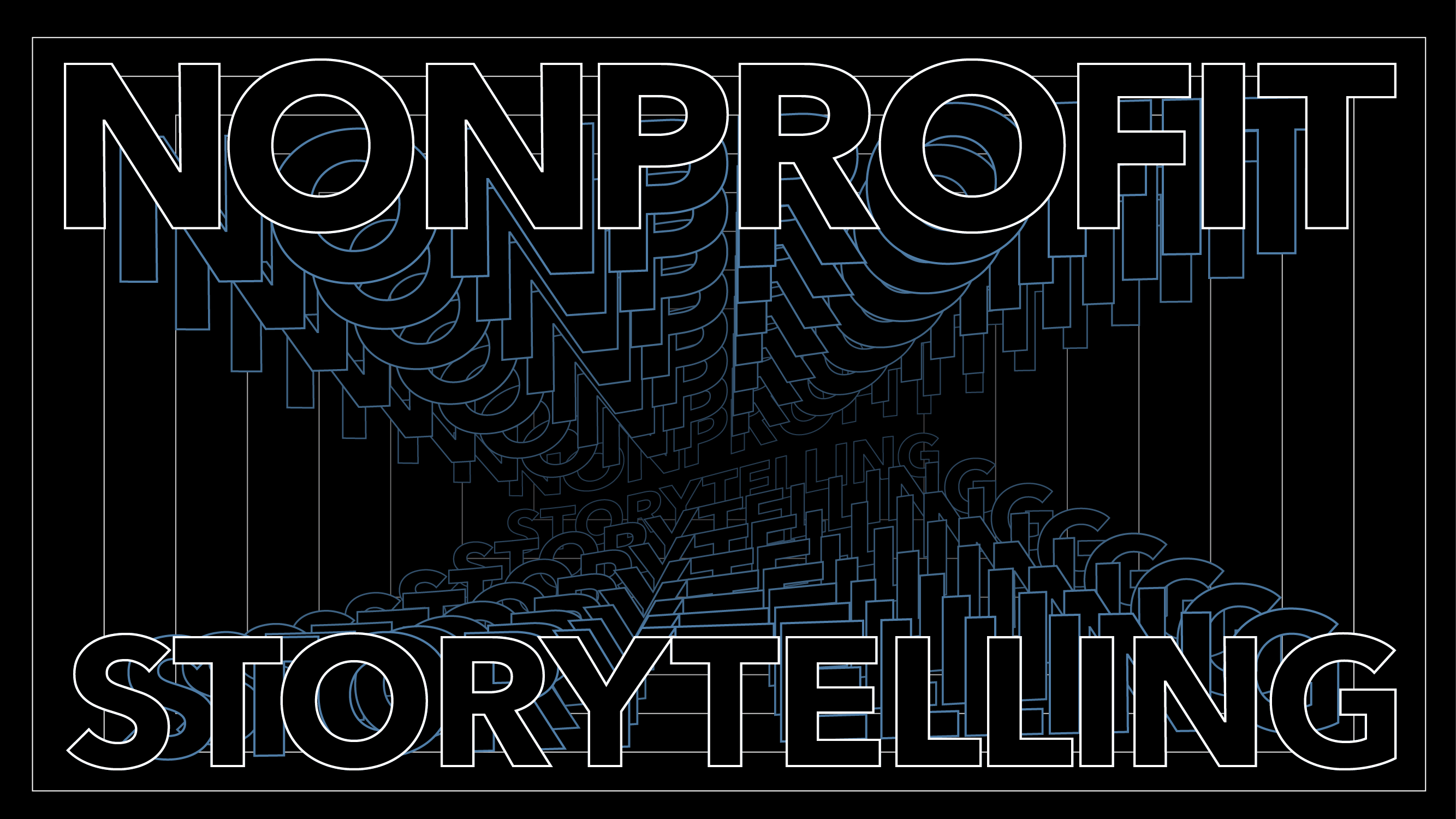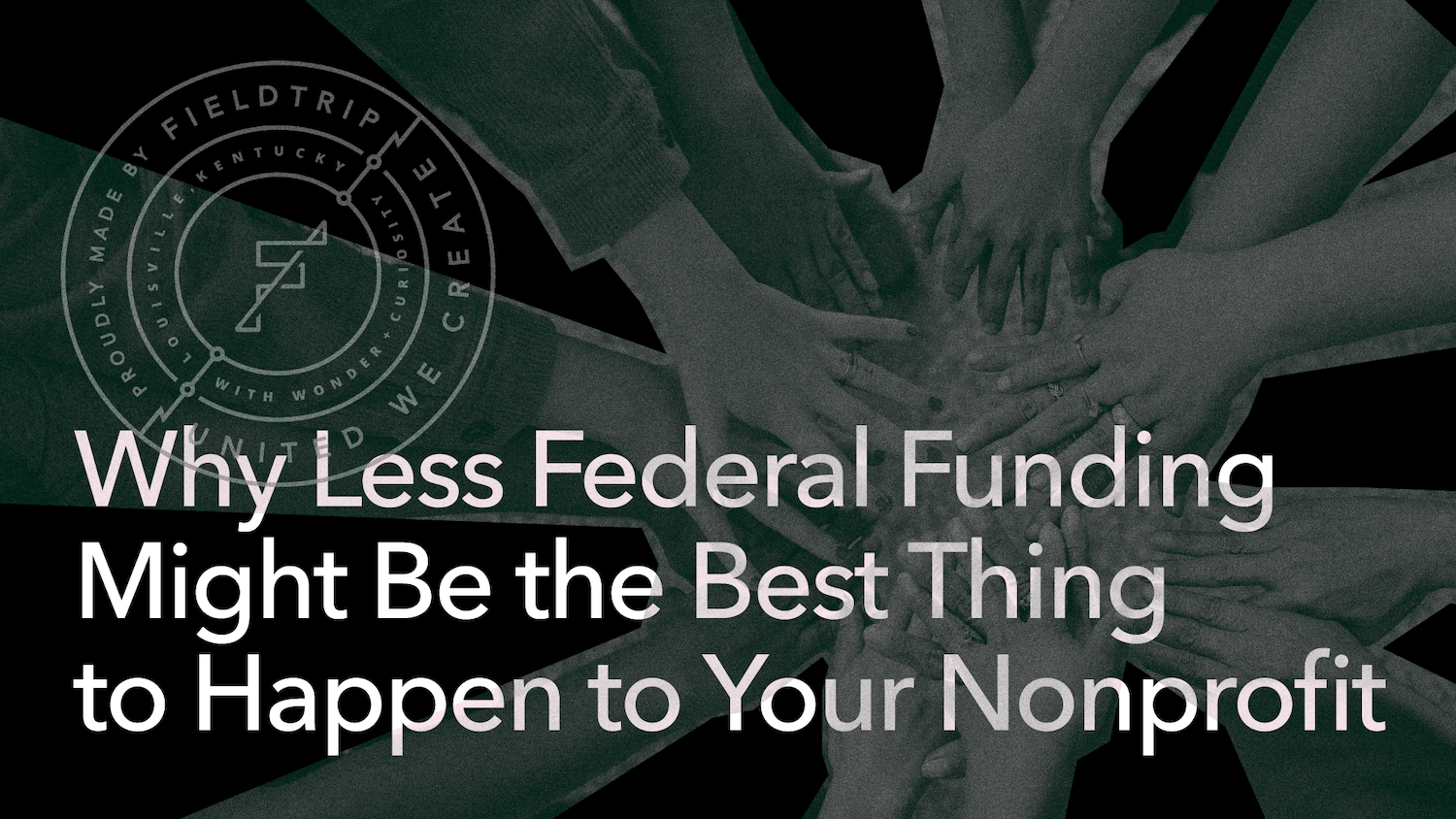
For nonprofit leaders out there, what do you think is your biggest cost? Your first thought might be the money you spend on fundraising. And while that’s understandable, it actually isn’t your biggest cost. What I’m talking about are the costs that are hidden — the IDKs (I Don’t Knows). If you constantly have to explain what you do and why you do it, you’re not focusing on the mission. And that’s costing you.
For today’s blog post, I will share why a nonprofit’s essence (think storytelling) is your secret weapon. I recently sat down with Patrick Kirby of The Official Do Good Better Podcast, and talking about a nonprofit’s essence quickly became the theme of that week’s episode (click here to give it a listen).
It’s the thing that prevents marketing from being an occasional operational expense and instead makes sure you’re investing in your mission and attracting the right connections.
Nonprofit Storytelling — Where to Start?
The best place to start when storytelling about your nonprofit is understanding the difference between marketing and communications. And believe it or not, many nonprofits think they are the same thing. But understanding the difference is vital in your storytelling. Communications is about telling the news how it is today. Marketing is about selling a promise on how the world can be a better place and how it benefits the person receiving that message (like a donor, volunteer, or beneficiary). Because nonprofits are often scrutinized, they need to look their best — that’s marketing’s job.
Bringing Impact into a Nonprofit’s Essence
Impact is a hot word right now, especially for nonprofits. And it makes sense because you need to be able to demonstrate the results of your work. But you need to take it a step further than how many lives you’re affecting, how many hours your volunteers are putting in or how many meals you’re serving. You have to connect the impact back to your audience’s specific motivations through the ripple effect.
Say you’re working for a nonprofit that helps the homeless, and you want to talk about how many people you’ve transitioned to affordable housing. That actually isn’t the full impact. It’s only the starting point. The ripple effect continues the story and shares that their children can attend school consistently and they now have a clean and safe place to play. They become reliable employees as they have access to the bus line and have less worry about the stability of a place to call home.
The impact isn’t the number of homes you created, it includes the educational investment of X children, the economic impact of X employees, and the value of living a fulfilling life and contributing to the community.
For a donor or board member who personally doesn’t know anyone struggling with homelessness, they’ll relate with the impact of the impact, such as knowing their community is stronger because they now have a stronger workforce. That has a direct impact on them. What you’re doing is making the impact relatable, which makes all the difference.
Key Elements in Telling a Nonprofit’s Essence
When it comes to how you talk about your nonprofit, at Fieldtrip, we say, “Don’t describe what you do. Inspire and invite.” An invitation will draw people in and remove friction between what you do and what people think you do, the assumptions they have around you.
Focusing on your organization’s essence — and telling that story — closes that gap. Here are a few things to consider to make your nonprofit storytelling more effective.
Make it Personal
We have a visual at Fieldtrip where we show a cheerleader with a megaphone, and she’s pointing it at fans to get them to join her. Those are the old days of advertising (and what we’re stuck with many times). Point the megaphone in the right direction, shout what you are about and surely enough people will cheer with you.

Our traditional marketing graphic depicting cheerleaders with megaphones shouting into the void, a vintage Fieldtrip favorite.
But then we show another visual where that megaphone is a cup of coffee, and people are sitting, listening, and learning from each other. When we find a need, we speak in order to learn more. Only when the need is understood should we share that we serve that need (like with beneficiaries). But it needs to be personal. If it’s not personal, it won’t mean much.
Explain What You Do in Three Words
Another thing we say is that if you’re explaining, you’re losing, which means if you have to go on and on when you tell someone what you do, you’ve already lost them. Instead, can you explain what you do in three words?
The key is making it emotional in a way that’s unique. Nonprofits are all trying to row in the same direction, but you need to fight for market share in that segment of services. If you don’t, it’s not that you’ll lose; you just won’t reach the highest potential you can. It is essential to get to the essence of what you do in as few words as possible, articulating it well and making sure it resonates everywhere. That’s nonprofit storytelling.
Move Your Audience Through the Continuum
If you think about the people you’re trying to affect (from beneficiaries to civic leaders), you need to move them through a continuum to create the most change. The first step is awareness. No one can do anything for you unless they know about you.
From there, it travels to alignment. Now someone not only knows you, they understand what you do and have the confidence that your nonprofit is the organization for the job.
Where you want to move them next is advocacy. So not only are they aware of you and believe in you, but they also become part of the solution, whether donors give money or volunteers give their time. But once you move people up to an advocacy tier, you must keep them there. Without nurturing and continuing your storytelling effort, they can drop back down to an alignment level or you may lose them completely.
Closing Thoughts
Nonprofit storytelling creates connection — and connection means everything in nonprofit growth. Through these elements, I hope to inspire you to close the gap and remove barriers — including those dreaded IDKs.
You can learn more about nonprofit storytelling and other topics in our Mission Multiplier video series here.

